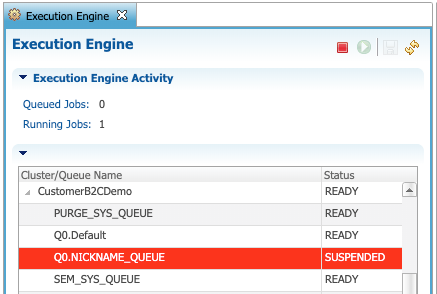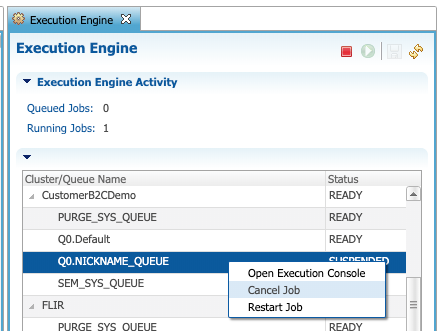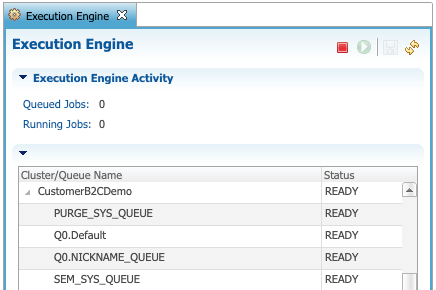Did you kick off an integration job (integration batch) that you need to stop? Is the execution engine showing a job is suspended and now you want to kill it?
Here are instructions on how to suspend and/or kill an integration job.
| Important note: This is not for load jobs. This is only for integration jobs. |
1. Go to the Administration Console and open the Execution Engine.
2. Find the Data Location where the job is running and retrieve the Queue name.
3. If the job is running: right-click the running Queue and click on Suspend Job.
The suspended Queue is now highlighted in red.

4. Right-click the suspended queue. Click on Cancel Job.

5. You should see the integration job is now canceled and the status should be set back to READY.

Q&A: killing, suspending or resuming jobs
Q: What is the correct procedure to stop and purge jobs? Is killing Tomcat processes the only way?
A: When you stop tomcat, the engine that executes the jobs is stopped as well, because it's part of the application.
So the job does not continue with the rest of the queued tasks except after you restart the tomcat server.
Then, the restart behavior depends on the queue settings. You can have more details about this in the online help, focusing on the "Queue Behavior on Error part".
Q: Is there any way to “resume” a load?
A: The default behavior is to restart a hung/suspended job where it was hung, so you don't have anything to do to resume the load. If you happen to get an Oracle error or if you choose to suspend, then you can restart a job.
Q: How do I interact with a running job to cancel it?
A: The only possible interactions with a running job are found in the administration console --> Execution Engine perspective.
Q: How do I cancel everything – kill all jobs/tasks (as a last resort)? Especially because I submitted over 100 jobs in the queue and they are all blocked from running.
A: You can only stop the currently running job in the queue. The following "scheduled" jobs will stay in the queue, ready to be processed as soon as the queue is restarted.
The easiest way to "cancel" these queued jobs is to delete all the records from the SD table(s) that bear a LoadID greater than the LoadID of the current job.
The submitted jobs will be executed but won't have a single row to process.
Q: How do I cancel (skip) a step in a specific job – such as skip processing the Party Address entity and let the rest of the steps continue (this is unlikely, but it may be needed sometimes)?
A: This is not possible.
Q: How do I resume a specific job – e.g. suspend job, fix the data, and resume it, restart it?
A: This is the default behavior. A suspended job can be canceled or restarted/resumed.
Q: Are there any other parameters that may affect the execution engine behavior?
A: Each queue has its own status. Read our support docs to find more information.
Q: I tried the above suggestions and nothing is working. I don't see anything suspended in the execution engine. But when I stop the execution engine and start it again, my MDM process job is not showing.
A: Stop tomcat. Start tomcat. Restarting tomcat is the last resort but it will work effectively to get the execution engine going again. Make sure you don't have other users using xDM when you restart Tomcat or else you'll boot them off.
